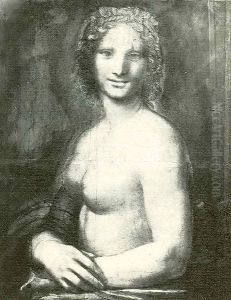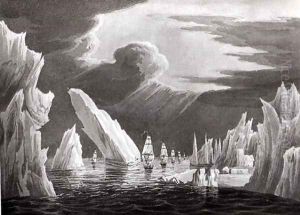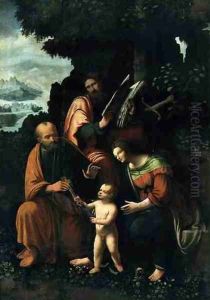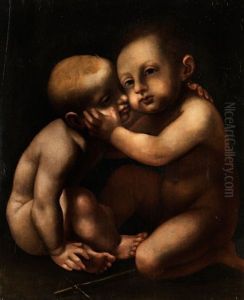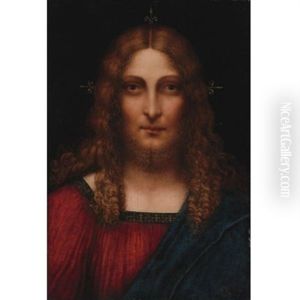Gian Giacomo Caprotti Paintings
Gian Giacomo Caprotti, also known as Salaì (a nickname meaning 'Little Devil'), was an Italian artist who lived during the Renaissance. Born in 1480, he is most famously known for his association with Leonardo da Vinci, whom he met when he was about ten years old. Caprotti became not only Leonardo's pupil but also his assistant, servant, and possibly his companion. He entered Leonardo's household in 1490 and remained with him for many years, working closely with the master on various projects and learning the techniques of painting and drawing.
Caprotti's relationship with da Vinci is complex and has been a subject of fascination for historians. Although he was often described as mischievous and thieving, which earned him his nickname, he was also depicted as Leonardo's favorite student. The extent of his influence on Leonardo's work, as well as the nature of their personal relationship, has been a matter of speculation. Some art historians believe that Salaì was the model for some of Leonardo's most famous works, including the iconic painting of St. John the Baptist.
Despite his close ties with Leonardo, there are only a few works that can be attributed to Salaì with certainty. Most of his own paintings have been lost or are known to us only through copies or attributions made by later art historians. His style, as can be discerned from these few remaining pieces, shows a strong influence from Leonardo, although it lacks the master's finesse and depth.
After Leonardo's death in 1519, Salaì inherited some of the master's works, as mentioned in Leonardo's will. He continued to work as a painter, but none of his later works achieved the recognition or fame of his teacher's masterpieces. Caprotti died in 1524 under unclear circumstances. His life and relationship with Leonardo da Vinci continue to intrigue and inspire research into the dynamics of master-apprentice relationships during the Renaissance, as well as the personal lives of the individuals within Leonardo's intimate circle.
